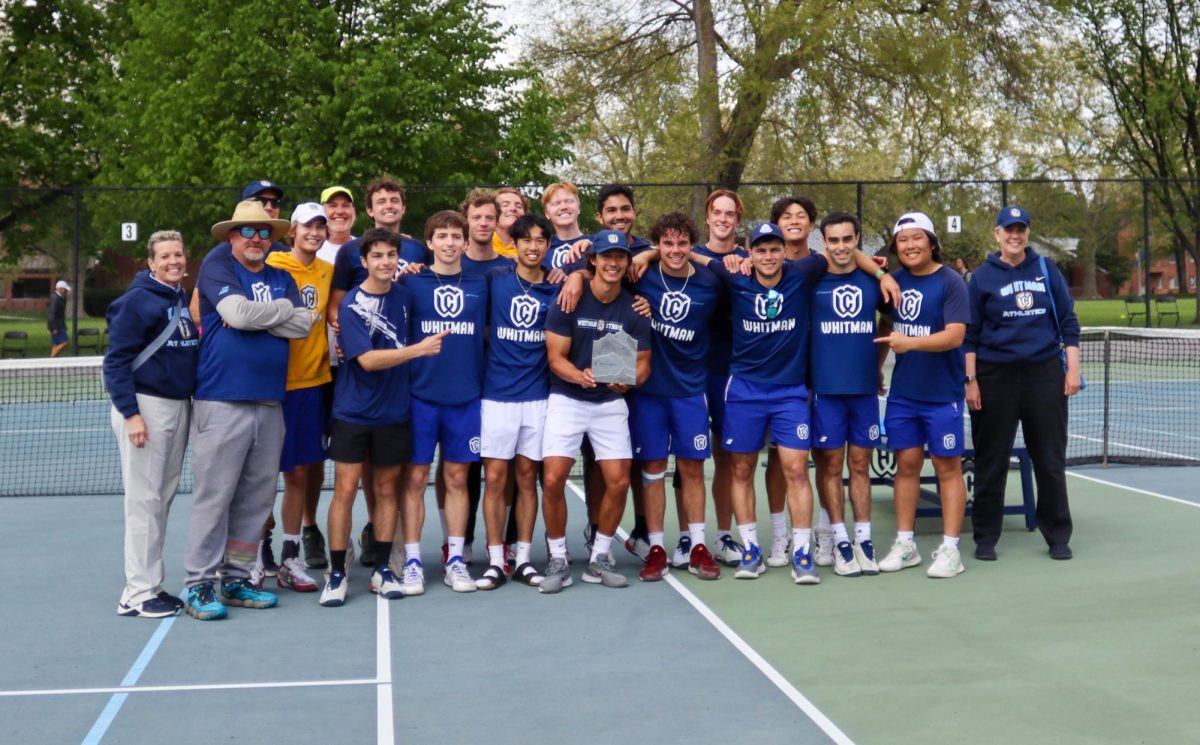The Men’s tennis team’s sweatshirts are, at a glance, no different from any other athletic apparel on campus, except that there is a small squirrel wearing boxing gloves embroidered into the hood. The squirrel is the team’s new “unofficial mascot,” according to sophomore Matt Solomon.
“The missionary doesn’t reflect the student body’s diverse racial or religious beliefs,” said Solomon. “The missionary mascot supports an all-white Christian portrayal of Whitman.”
“At all types of games its rare that you hear students doing missionary cheers; it’s all ‘Go Whitman,'” said Solomon. “We decided that it was time for a change. We wanted something fun, something students could really unite around.”
Solomon, along with teammates Nadeem Kassam and Justin Hayashi, then talked to Men’s tennis coach Jeff Northam and prepared a slide show presenting their case for a mascot change. Still, the Fighting Squirrel is far from being official.
“The official mascot is the Missionary; it’s dearly loved by the alumni, which I was reminded of again, quite recently, through conversations with alumni. It has a long history since the establishment of the college,” said Athletic Director Dean Snider.
Whitman, first known as Whitman Seminary, was founded in honor of Marcus Whitman, a missionary to the Cayuse natives around what is now Walla Walla.
Despite the historical significance of the missionary, Snider said, “I don’t think the athletic department holds any fondness to the mascot of the missionary. I know there are several programs that downplay the mascot of the missionary…. There are some programs that use it quite comfortably; it’s just a part of who they are and they recognize that”
That is not true for men’s tennis. “The missionary isn’t what you’d want in a mascot. Other schools think it’s a joke. It’s embarrassing to tell other teams what the mascot is,” said Kassam. “People should be attached to their mascot.”
This isn’t the first time dumping the missionary has been proposed.
“In my 12 years here there have been numerous movements to change the mascot, and the last one prior to our men’s tennis team was squashed very quickly by alumni because they felt they weren’t consulted in it,” said Snider.
Snider, who was appointed athletic director in 2006, feels that a mascot change is possible; however, he said, “There are different constituents of the institution that need to participate in that conversation. Students are definitely one [group], the alumni are a significant group, they should have a voice in any kind of process of change. Clearly our also administration needs to have some kind of voice in that process.”
The men’s tennis team would like to see that dialogue.
“We’d like to look towards changing the mascot officially,” said Solomon. “The missionary isn’t something that unifies the student body. By changing our mascot, we aren’t trying to differentiate ourselves from other sports; a mascot should be something fun, that students get excited about.”
Still, Kassam seems pessimistic. “I think students want a change; they just don’t want to be the ones making change,” he said.


